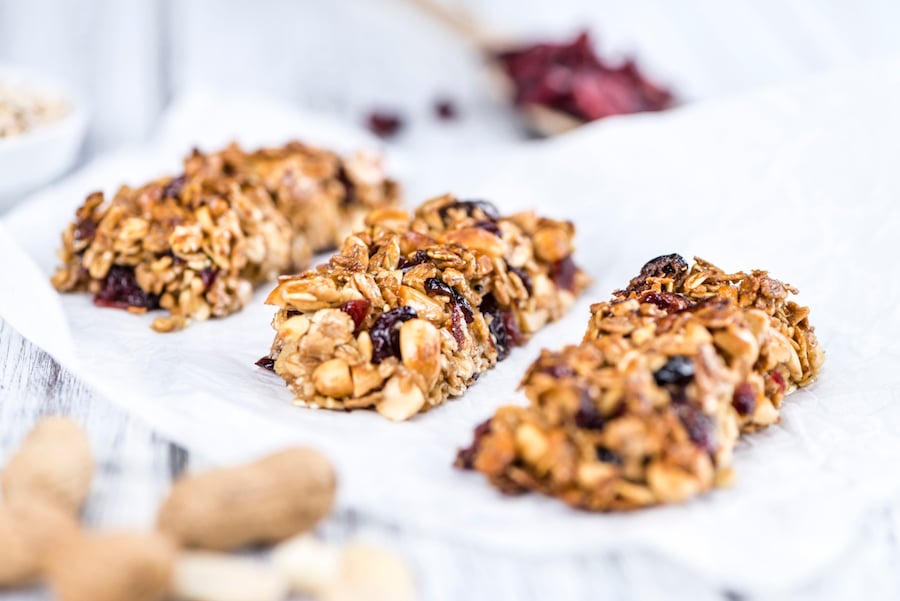
Today’s busy consumers are on the lookout for healthy grab-and-go snacks. In particular, protein-packed bars have exploded in popularity and are a $6.5 billion industry in the United States alone. The U.S. nutrition bar market is expected to grow at nearly 10% CAGR through 2030.
Advances in high-protein ingredients are helping drive the market by appealing to consumer preferences. What are those preferences? A recent study cited that the most important attributes for consumers include:
- Great tasting (56%)
- Enjoyable texture (34%)
- High protein (50%)
The data is clear: Consumers want the nutrition and health benefits of protein bars but are not willing to compromise on key sensory attributes. When protein bar manufacturers can deliver nutrition and indulgence in a single product, they can more easily capture consumers’ attention and market share.
Whey Protein — The Gold Standard
Of no surprise to nutritional bar producers, whey protein — available in various forms — is the go-to protein source for nutritional bars. While plant-based protein sources are sometimes used, many can’t compete with whey protein for quality, clean flavor, protein levels or texture. Undesirable flavors from plant-based proteins are a common industry challenge and require formulators to introduce masking agents or other chemical-sounding ingredients.
Whey proteins, especially whey protein crisps, deliver a clean, crunchy, “rice crispy” texture that appeals to consumers. And their high protein content (up to 70%) supports nutritional goals. Whey protein has been shown to provide the greatest nutritional value, satiate hunger and even reduce the risk of diabetes.
RELATED: Find out which protein crisp is right for your snack foods
Top Indulgent Healthy Snack Trends
Whether from a vending machine, retail shelf or convenience store, here is what today’s picky consumers are reaching for when craving a healthy snack.
Real Ingredients and Natural Sweeteners
Consumers want protein bars that boast natural, better-for-you properties. A decline in salty, oily snacks is in response to health-conscious snackers who want treats with less sodium and trans fats and more natural ingredients and protein. Producers are increasingly removing artificial ingredients from their formulations and infusing health-promoting ingredients like collagen and antioxidants.
The low-carb and Keto communities continue to influence the trend toward lower glycemic counts and fewer grams of sugar. Those with these types of food plans also avoid artificial sweeteners. Naturally derived sweeteners such as stevia and monk fruit are often found in ingredient lists. These natural sweeteners are low in calories and keep blood sugar levels steady.
Mindful Snacking
Free-from claims are popular with consumers. What’s not on a label is just as important as what is. In addition to fewer added sugars, many consumers avoid highly processed foods with additives and preservatives. They’re also choosing gluten- and soy-free formulations.
Clean-label products are also mainstream, and several retailers are increasing shelf space in response to consumer demands. For consumers who prefer to dine at home, healthy snacks are even being added to meal kits.
Indulgent Formulations
It is difficult to topple tried-and-true protein bar flavors from the throne. Many manufacturers are testing unique flavors like cookie dough, lemon delight or white chocolate raspberry.
Of course, a flavor profile that remains on top of almost every snack category is chocolate. Even with this classic ingredient, many snack manufacturers are adding a twist by blending cocoa flavors with cinnamon, salted caramel and s’mores. While flavor is the most important factor for consumers, enjoyable textures with just the right amount of crunch are a must to truly be considered indulgent.
Crunch With Benefits
Consumers are generally leaning toward more fruits, nuts, seeds, oats and whole grains in their snacks — a clear indication that they still want classic crunchy textures.
Whey protein crisps appeal to consumers on many levels. Using protein-packed crisps adds a light crunchy texture to protein bars and snacks and boosts their nutritional value. Because of their clean, neutral flavor, protein crisps can be incorporated into many applications in addition to protein bars, including snack mixes, cookies, baked goods, cereals and more.
At Grande Custom Ingredients Group, our Grande WPCrisp protein crisps are featured in some of the nation’s top-selling protein bars. Reviewers consistently say things like…
“Texture-wise, they strike the perfect balance. They're not too hard or too soft, making them easy to chew and digest.”
“It's like indulging in a treat while you're actually giving your body the protein it needs to recover effectively.”
Our clean-label crisps are made with the highest quality whey protein and are available in 60% and 70% protein. We also offer a natural dark cocoa flavor, ideal for chocolatey applications.
Grande WPCrisp is the perfect alternative to soy, corn or rice crisps which pale in comparison for flavor, digestibility, protein availability and biological value. To see the difference between whey protein crisps and other options, check out our comparison chart below.
To find out more about why our protein crisps are the best type for use in your application and why other leading brands agree, reach out to our expert team of food scientists. We can help you learn more about including this natural ingredient solution in your formulations.





